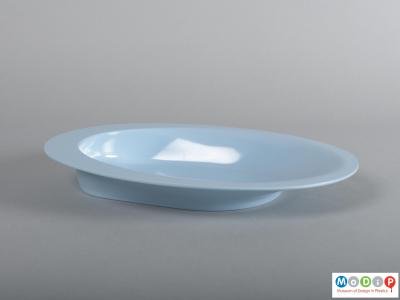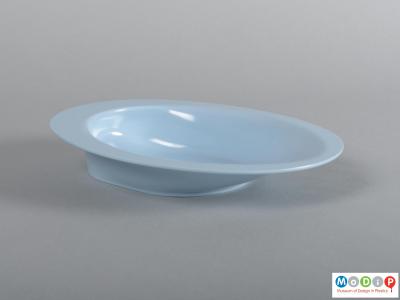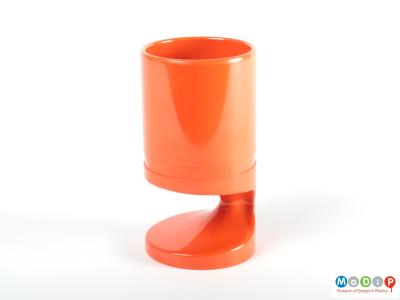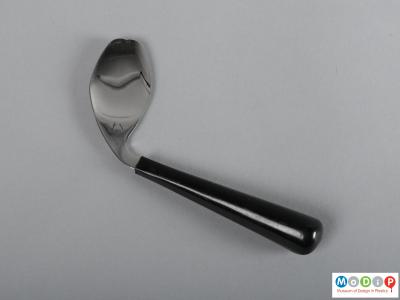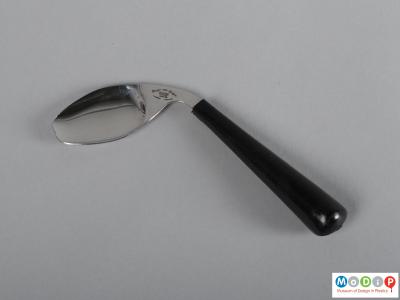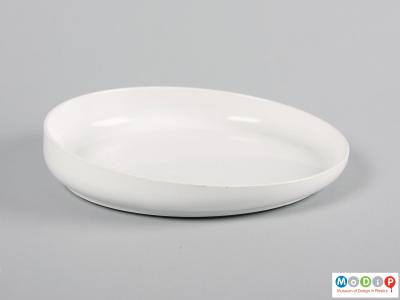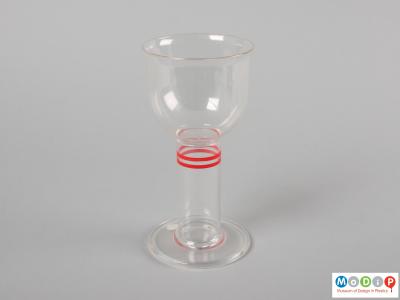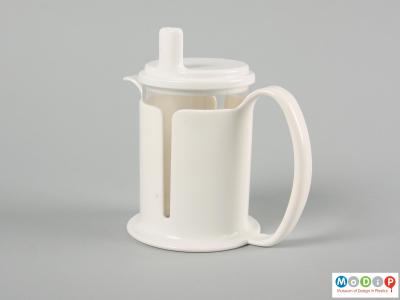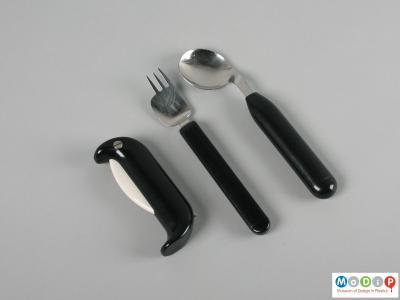Assistive or adaptive tableware is designed to meet the needs of people with reduced physical ability, for example, where the effects of aging or the onset of degenerative disease makes eating meals a challenge. Carefully designed products, using appropriate materials, can promote independence and influence psychological benefits such as improved dignity and self-esteem, without the worry of breakages. All of the objects in this case were designed for users suffering from rheumatoid arthritis and conceived to minimise difficulties in handling and manipulating whilst retaining aesthetic appeal.
The Manoy tableware range (1-8) was designed by New Zealand industrial designer and ergonomist Russell Manoy, in 1969. The set is made from melamine formaldehyde (MF) which was selected due to its better than normal break-strength, design flexibility, lightness in weight, hygienic, easily cleaned finish and low cost of production. The designer felt that this combination of requirements could not be met by anything other than plastics.
Both the large and small plates (1-2) have directional flow and a large flange on the side to aid gripping. The beaker (3-5) has no handle, the cantilevered weight being balanced by the base which can be held between the thumb and the palm of the hand. The cutlery (6-8) has triangular shaped handles with curved edges to provide improved grip. The bowl on the spoon/fork is angled to reduce wrist flexing, whilst the knife blade is designed to cut in either a slicing or rocking action, the latter more suited to one-handed use.
The Eat/Drink series (9-12) was designed in 1978 by Swedish industrial designers Maria Benktzon and Sven-Eric Juhlin. MF was again chosen as the material for the raised lip plate (9), but the other objects use polycarbonate (PC), a strong, tough and high impact-resistant thermoplastic. The goblet (10) incorporates a large base for stability and has a wide stem to assist with lifting. The beaker (11) sits within a polyethylene holder that has one conventional handle and an extra lip on the opposite side. The fork and spoon (12) both have lightweight PC handles but the folding knife pivots into a polyurethane handle which is opened by pressing, not pulling, and is again designed for people with single-hand function.

